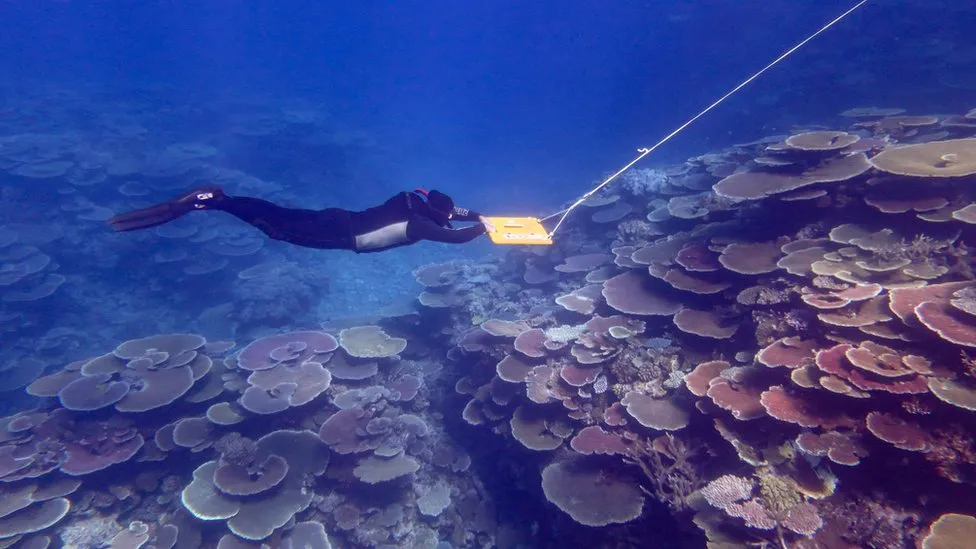Great Barrier Reef sees record coral cover, but it is highly vulnerable

Coral has recovered from storms and bleaching events to record levels across much of Australia's Great Barrier Reef, a survey has found.
ดาวน์โหลด slotxo wallet You can also win jackpot bonuses from slot games. Online slots, deposits, withdrawals, no minimum. The gameplay of slot games is simple. It's a no-brainer, perfect for beginners. You don't need a lot of capital.
The reef's northern and central parts have the highest amount of coral cover since monitoring began 36 years ago.
But coral cover in the southern part of the reef has decreased.
The new coral is particularly vulnerable - meaning the progress could be quickly undone by climate change and other threats, officials say.
Each year the Australian Institute of Marine Science (Aims) surveys the reef's health, using aerial surveys and divers slowly towed by boat.
After the fourth mass bleaching in six years was confirmed in March, Aims had grave concerns ahead of this year's study.
"In our 36 years of monitoring the condition of the Great Barrier Reef we have not seen bleaching events so close together," said chief executive Paul Hardisty.
Bleaching occurs when corals stressed by warm water temperatures expel the algae living within them that gives them colour and life.
Only two mass bleaching events had ever been recorded before 2016.
This year's bleaching event was the first to occur during a La Niña, a weather phenomenon which typically brings cooler water temperatures.
These latest results demonstrate the reef can recover if conditions allow, Dr Hardisty says, but "acute and severe disturbances" are becoming more frequent and longer.


